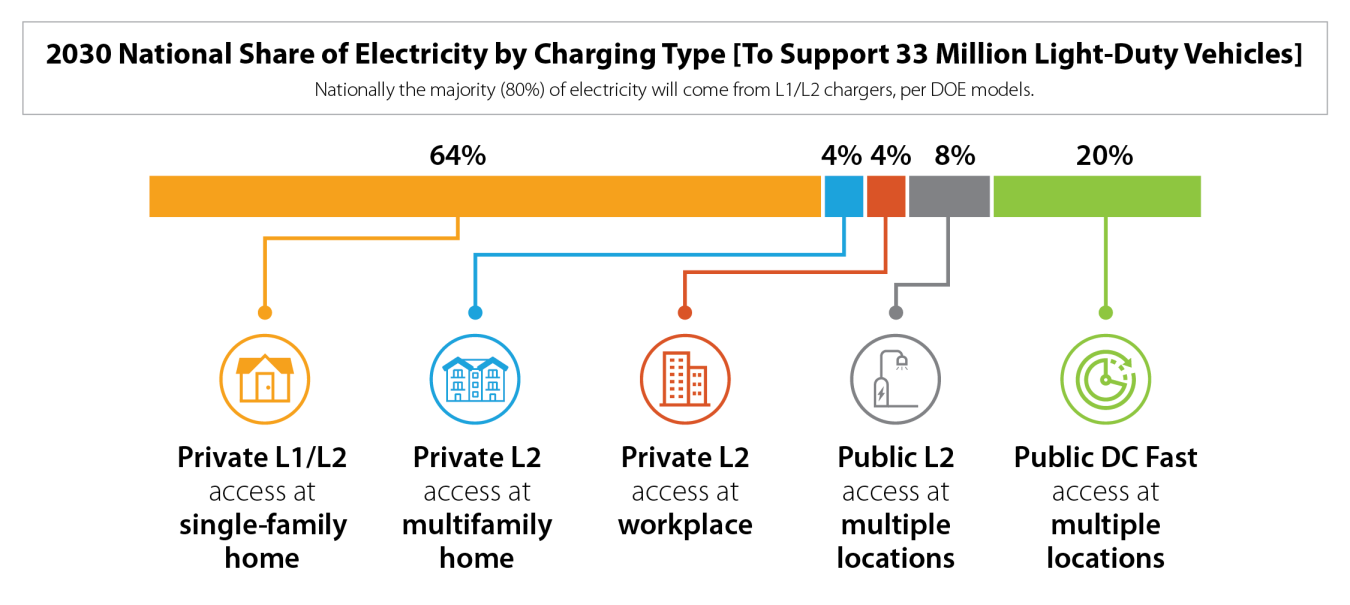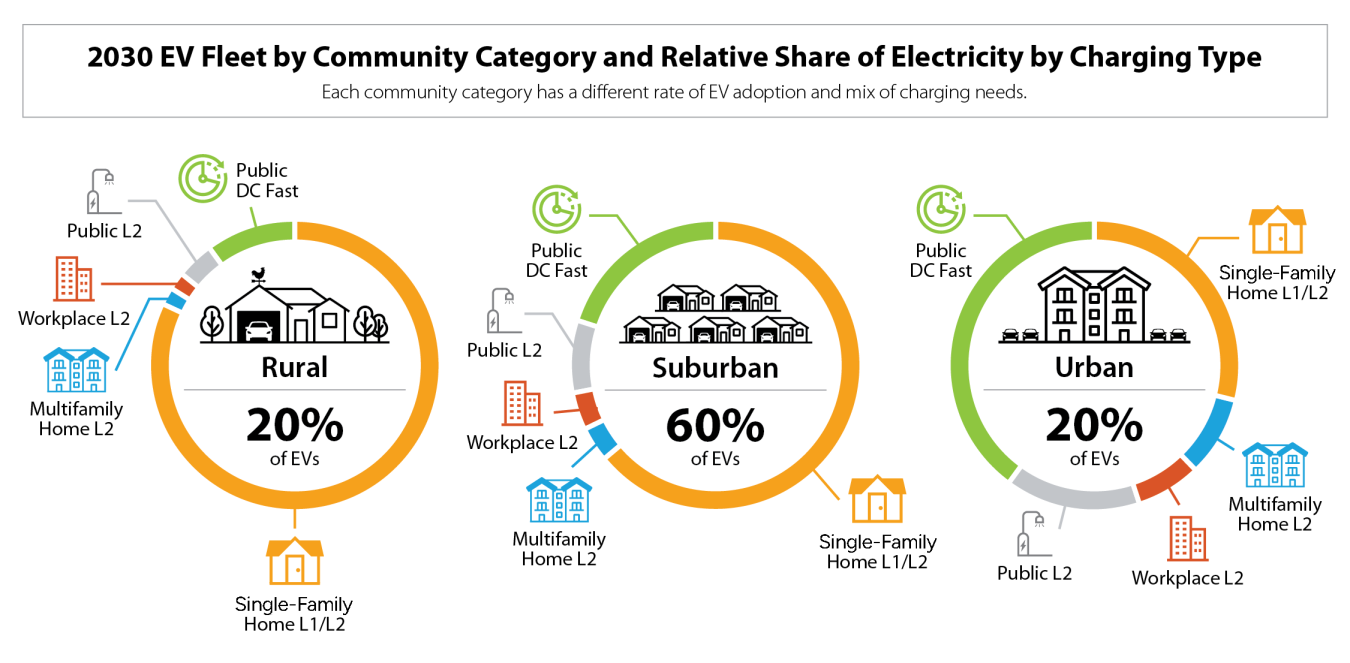See below for a collection of charts and infographics about electric vehicle (EV) charging trends.
By 2030, the U.S. Will Need 28 Million EV Charging Ports To Support 33 Million EVs
The National Laboratory of the Rockies (NLR) estimates that by 2030, there will be 33 million EVs on the road and 28 million EV charging ports will be needed to support them. The majority of charging will be at home and work, with the public network for opportunity charging and less common long trips.
Of the 28 million charging ports, 25.7 million (92%) are expected to be private Level 1 (L1) and Level 2 (L2) chargers at single-family homes. Additionally, there will be an estimated 2.1 million (7.6%) public and private L2 chargers at multifamily homes, workplaces, stores, restaurants, and hotels. Estimates show 182,000 (~1%) direct current (DC) fast charging ports would be needed at public charging stations, primarily to support those with no access to consistent off-street parking, as well as for long-distance travel.
L1 and L2 EV Charging Are Expected to Account for 80% of All EV Charging in 2030
NLR expects L1 and L2 charging to handle 80% of all EV charging duties by 2030. Sufficient energy from the electric grid may be needed to support 33 million EVs on the road by 2030. The majority (64%) of EV charging is estimated to take place at single-family homes using L1 and L2 charging, which is typically the most cost-effective and convenient type of charging. DC fast charging infrastructure is expected to support 20% of EV charging needs.
60% of EVs Are Expected to Be in Suburban Areas in 2030
Sixty percent of the 33 million EVs expected by 2030 are projected to be in suburban areas, according to a 2023 NLR report. Of the remainder, 20% will be in rural locations and another 20% in urban areas. The charging network needs for EVs are different depending on whether EV owners live in rural, suburban, or urban areas. While electricity from public DC fast chargers would be the most utilized in urban areas (40%), in rural and suburban areas, L1 and L2 chargers in single-family homes are expected to meet the majority of EV electricity needs (82% and 64%, respectively). Although DC fast charging receives a lot of attention, increasing the availability of L1 and L2 charging is critical to enable consumer EV choice.
Notes
- Level 1 (L1) refers to 120 V AC charging from a typical U.S. household outlet.
- Level 2 (L2) refers to 240 V AC charging like that used for a household electric dryer.
- DC fast charging in this study refers to charge rates of 150 kW or higher.
- Low-power DC charging (e.g., 50 kW) is omitted from the study’s baseline scenario on the basis of assumed driver preferences for DC charging that is as fast as possible and 2030 vehicle technology scenarios where batteries are capable of accepting at least 150 kW of peak power.





